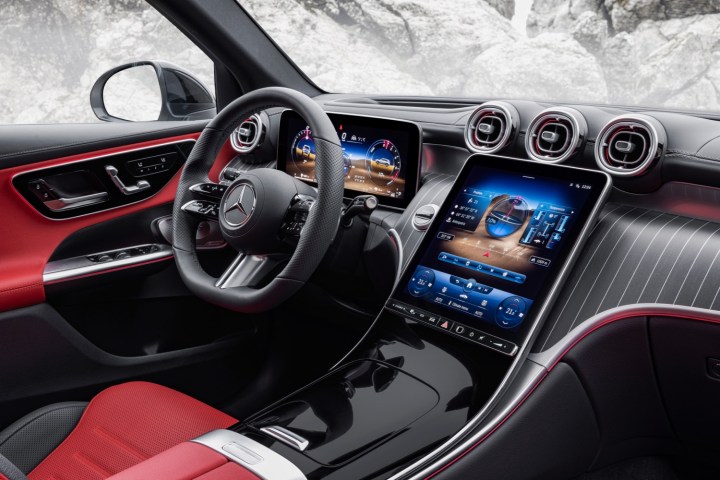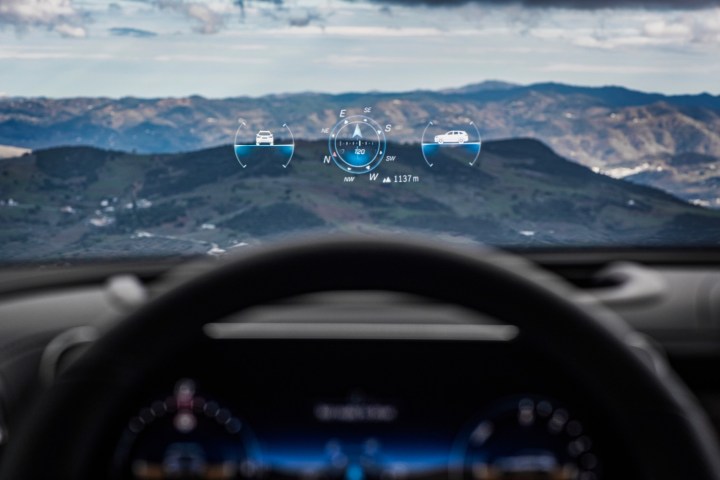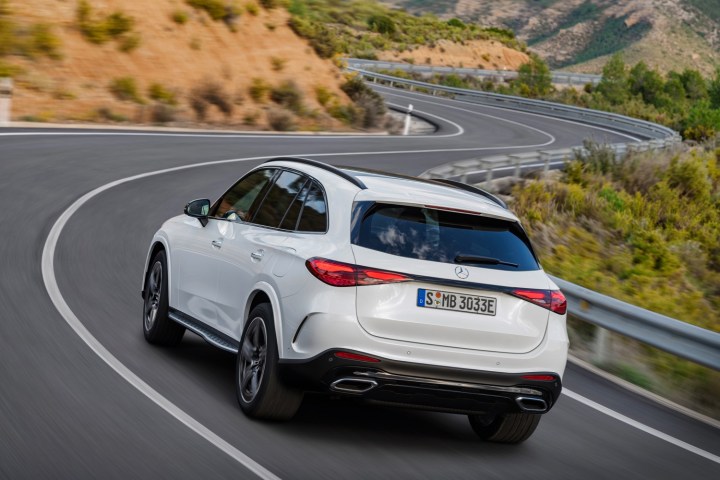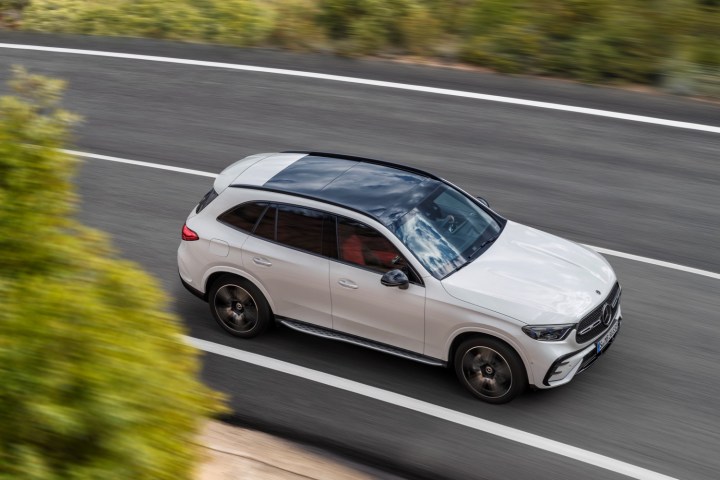Mercedes-Benz isn’t afraid of bold design, but not every luxury car shopper wants a vehicle that looks like a spaceship. Some Mercedes models are meant to be trendsetters, but the GLC-Class SUV is aimed at people who don’t need to be early adopters.
The GLC is a small SUV of the type that’s become the default for many buyers. So while the redesigned 2023 Mercedes-Benz GLC-Class gets notable features like a redesigned infotainment system, “transparent hood” camera system, and mild-hybrid powertrain, it’s all packaged in a way that looks familiar.
Design
The 2023 GLC-Class is noticeably different, but still recognizable. The overall shape and proportions are similar to the predecessor model, but the effect of the wind tunnel can be seen in the new model’s more streamlined surfaces. Mercedes claims a slight decrease in drag coefficient, from 0.31 for the old model to 0.29 for the new one, allowing the new GLC to cut through the air more efficiently.
The new GLC is 2.4 inches longer and 0.16 inch lower than its predecessor, according to Mercedes. While the new model isn’t wider overall, track widths were increased front and rear, making the 2023 GLC look more planted. Cargo space has also increased by 2.5 cubic feet, according to Mercedes.
The real difference, however, is what you see from the driver’s seat. The old GLC interior was nice enough, but the new version turns up the drama with an inclined touchscreen topped by three large air vents, along with a freestanding digital instrument cluster. It’s the same design previously seen on the Mercedes S-Class and C-Class sedans.
Tech
The main touchscreen measures 11.9 inches, while the instrument cluster measures 12.3 inches. Wireless Apple CarPlay and Android Auto are standard, and wireless phone charging, a head-up display, and a fingerprint scanner are available as well.
The 2023 GLC gets an updated version of the Mercedes-Benz User Experience (MBUX) infotainment system. In addition to the natural-language voice recognition that has consistently been one of MBUX’s best features, the new version has more processing power, per Mercedes.
Also new to the GLC is augmented reality navigation. Introduced in the S-Class, it pulls up a video stream on the central touchscreen with superimposed arrows, helping ensure you don’t miss a turn.
Available driver-assist features include adaptive cruise control (with route-based speed adaptation and stop-and-go functionality), automatic emergency braking, rear cross-traffic alert, blind-spot monitoring, traffic sign recognition, lane-keep assist, and park assist.
A 360-degree camera system and dashcam are available as well, along with “Car-to-X” communication. This allows information to be shared between vehicles, giving drivers advance warning of road hazards. But that only works if a sufficient number of networked vehicles are in a given area.
Specifications
The redesign also includes a mild-hybrid powertrain consisting of a 2.0-liter turbocharged engine and nine-speed automatic transmission teamed with an electric motor and 48-volt electrical system.
The GLC is no Toyota Prius, but the mild-hybrid system does a few things to improve efficiency. The electric motor replaces the engine starter, allowing for a more aggressive start-stop system. It can also maintain momentum at highway speeds, allowing the GLC to “sail” with the engine off, Mercedes claims.
The electric motor also provides a boost of 23 horsepower and 148 pound-feet of torque in short bursts, supplementing the gasoline engine’s 258 hp and 295 lb-ft of torque. That will get the GLC from zero to 60 mph in 6.2 seconds, according to Mercedes. Top speed is electronically limited to 130 mph.
As before, the GLC gets standard rear-wheel drive and optional 4Matic all-wheel drive. While the GLC will never be confused with a Jeep, it does feature off-road drive modes, hill descent control, and the aforementioned transparent hood. This uses the onboard cameras to show what is underneath the vehicle at speeds up to 5 mph. If you need to use this feature, you won’t be going any faster.
Rivals
The 2023 Mercedes-Benz GLC-Class launches in the U.S. in the 2023 calendar year. Pricing will be released closer to the launch date. While it will initially be available only in GLC300 and GLC300 4Matic guises, expect Mercedes to expand the lineup with AMG performance models and a redesigned GLC Coupe at a later date.
The GLC competes with a large contingent of small luxury SUVs, including the Audi Q5 and BMW X3 from Mercedes’ main rivals. The GLC’s fresher design and tech should give it an advantage when it arrives next year.
Looking beyond the German brands, the GLC also faces the Lexus NX, which was recently redesigned with its own elaborate infotainment system, as well as an available plug-in hybrid powertrain. The Volvo XC60 and Lincoln Corsair are also available as a plug-in hybrids, while the Genesis GV70 brings more style to the table. Mercedes has its work cut out for it, then.
Editors' Recommendations
- Mercedes G580 electrifies an off-road icon
- 2025 Mercedes-Benz EQS sedan gets new face, bigger battery
- Part plug-in, part dragster, the Mercedes-AMG GLC63 is an SUV of many faces
- Mercedes-AMG EQE SUV first drive review: a better electric SUV
- 2024 Mercedes-AMG S63 E Performance first drive review: high-performance plug-in






